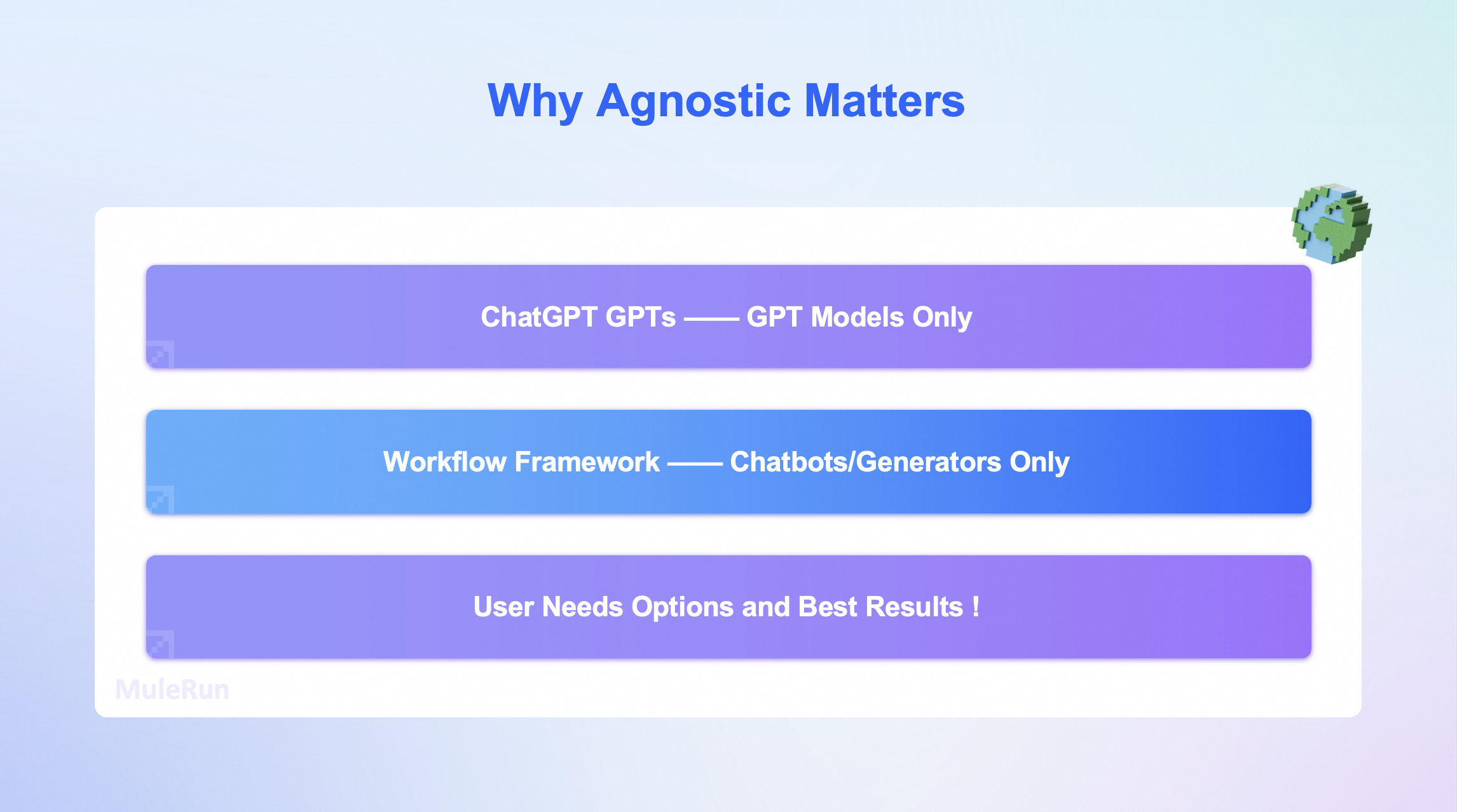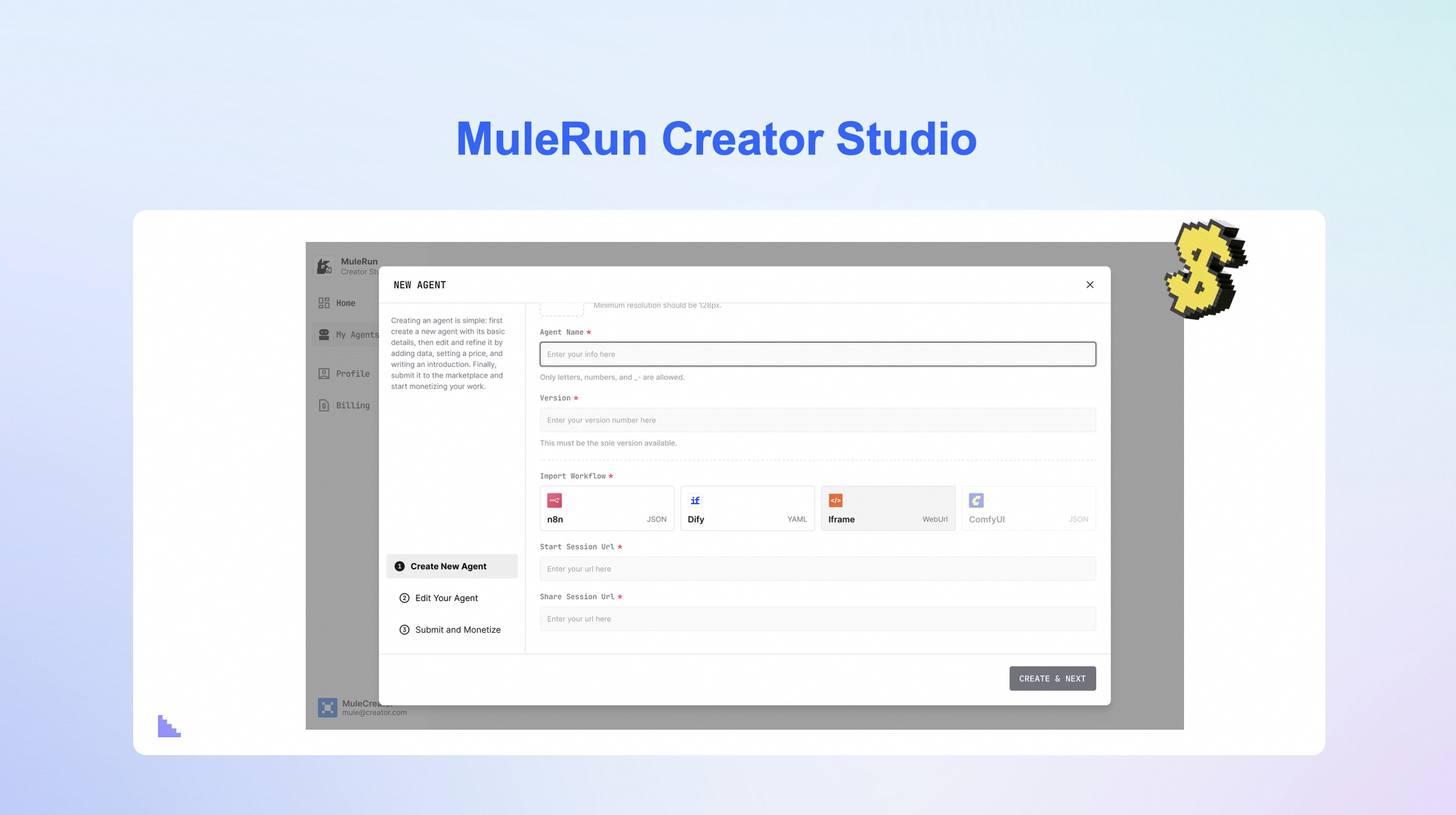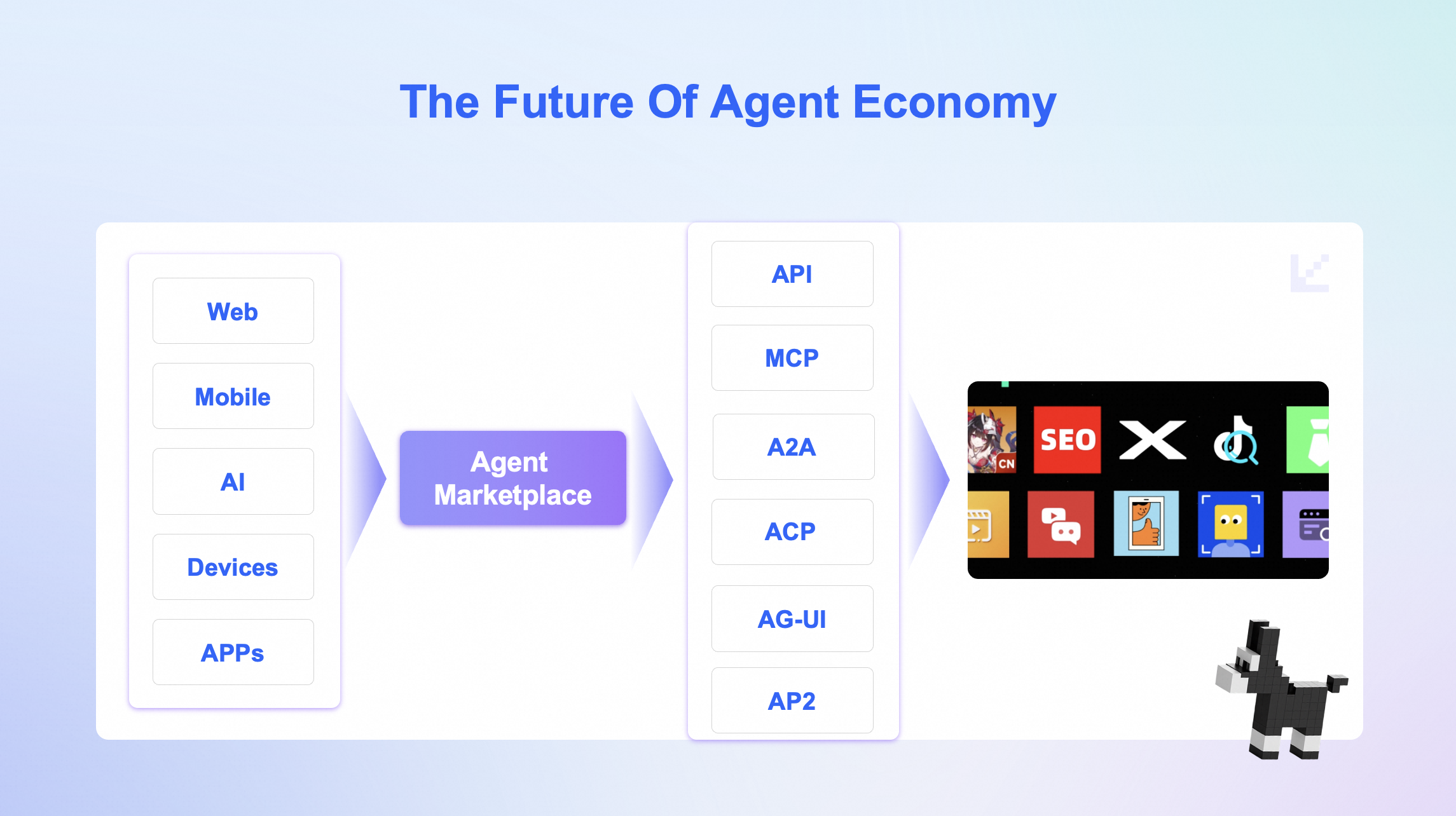TL;DR: MuleRun is a model- and framework-agnostic marketplace built to solve platform lock-in. It empowers you to select your desired tools for building agents. By complying with open protocols, MuleRun becomes a single, consistent endpoint for the entire agent ecosystem, allowing any consumer — whether a person, a device, or another agent — to discover, call, and transact with any agent.
This blog is adapted from a presentation given by Cheng Fu, CPO of MuleRun, at the Apsara Conference.
Why Agnostic Matters
Let’s start with the problem. We live in an era of incredible diversity in AI. New models, new architectures, and new development frameworks appear every few months. Each makes new capabilities possible — better reasoning, better coding, new multimodal abilities. We have model families like Claude 4 that are expensive but best at coding. We have model families like Qwen3 that are open-source and cost-effective. We have model families like GPT-4 that are better at writing and translating. And we have a bunch of agent development frameworks that perform well in their verticals. But that diversity also creates fragmentation and lock-in.
Consider a marketplace that only supports one model family or one framework. On the surface it’s simple and fast to adopt. In practice, it has important downsides.

Why Agnostic Matters
Let me give you some concrete examples. Today you can create custom experiences in ChatGPT through GPTs—that’s a powerful capability. But those experiences are bound to GPT-family models inside that ecosystem. You cannot use other models in GPTs. Consider a developer who created a coding agent in GPTs. Since we all know Claude 4 is the best model for coding, and developers have no loyalty to a specific model (they follow performance), this mismatch creates friction and ultimately leads to user churn. We’ve already seen coding capability leadership shift among models.
As another example, if you are tied to one of those workflow frameworks — we can think of many names— you can only create chatbot agents or content generation agents. If you want to build a freeform design agent using canvas — on top of the workflow framework, it would be very difficult.
If marketplaces are not flexible, they will lose both developers and end users.
From the perspective of both developers and end users, the optimal platform minimizes constraints. Let developers pick the best model and framework for each agent. Let end users access the best agent for their problem, regardless of the model that powers it. That’s the core value of being agnostic.
MuleRun: A Model- and Framework-Agnostic Marketplace
This is where MuleRun comes in.
MuleRun is designed as a marketplace that does not restrict which models or which agent development frameworks the developers use. You can upload workflow-centered agents, conversational agents, browser use agents, even computer use agents, and many other agent types. Our MuleRun Creator Studio lets developers publish agents of different kinds — and we are working hard to keep expanding the types of agents that the platform supports.

MuleRun Creator Studio
By enabling cross-model, cross-framework agents, MuleRun helps prevent a single company from monopolizing the entire agent stack. A healthy ecosystem is one where many players can participate and win on the basis of innovation and competition. We don’t want to live in a future where one company rules them all.
But being agnostic is more than just a declaration; it’s an architectural choice with profound implications. How does a platform truly achieve this freedom from lock-in?
One path is to build a complex, proprietary abstraction layer—a “universal translator” that the platform itself controls. This approach, however, merely replaces one form of lock-in with another. Developers would simply be locked into our specific way of achieving interoperability.
We believe there is a better, more sustainable way. Instead of inventing our own closed solutions, we choose to build upon the emerging, shared language of the entire industry: open protocols.
This strategic decision is the bridge between our platform’s agnostic design and the future of the agent ecosystem. It’s how we ensure that any agent complying with these open standards can be seamlessly listed, interoperated, and utilized on MuleRun.
The Future of the Agent Ecosystem
So where does this lead us?
We believe the agent economy will evolve into an ecosystem of many components. This ecosystem will include human users, AI agents as the users of other agents, and machines or other devices acting on behalf of users. As that happens, one of the most valuable things a marketplace can offer is a single, consistent endpoint where any consumer — whether a person, a device, or another agent — can discover, call, and transact with an agent.

The Future of Agent Economy
To enable that future, we focus on protocols. The industry is heavily invested in developing open protocols. We already have many protocols in the agent economy:
API: The foundational protocol that many of you already know.
MCP: For agents to talk to tools.
ACP: A security-focused protocol for communication between independent agents, designed with open governance and no vendor lock-in as first principles, introduced by IBM.
A2A: For communication between independent agents across systems, introduced by Google.
AG-UI: For agents talk to real human users on web pages.
AP2: For agents to handle payments and transactions, also introduced by Google.
We don’t aim to invent yet another closed protocol. Instead, MuleRun is built to comply with the widely accepted, open protocols that emerge in the agent world. By doing so, any agent that complies with these protocols can list on our platform, interoperate with other agents, and be used by any client that understands the same protocols.
If you’re interested in what we’re building at MuleRun — whether you’re a user, a developer, or a future builder — we invite you to get started! You can explore the agents on our marketplace, join our community on Discord, or apply to become a creator and build with us!
